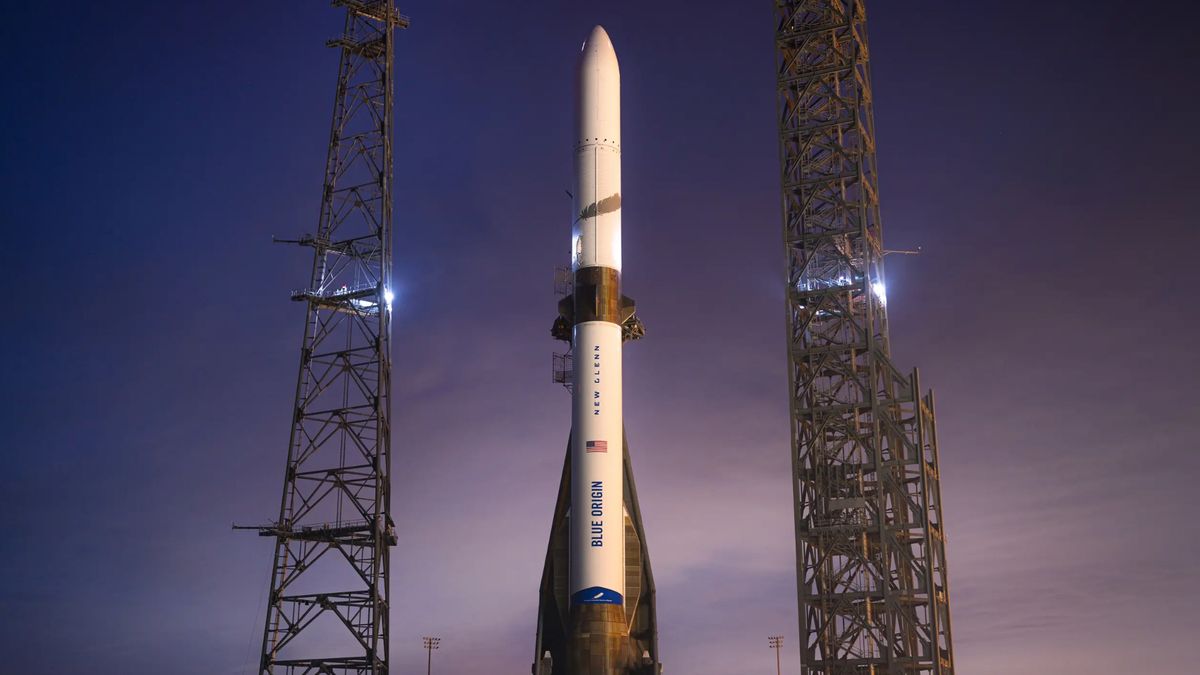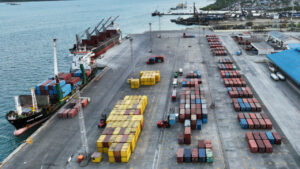Humanity has been unintentionally engineering the decline of Antarctic ice mass and subsequent sea level rise (SLR) for more than a century. We have done so knowingly since at least the 1970s, when the concept that marine ice sheets could be destabilized by rising atmospheric and oceanic temperatures was introduced, if not since the 1850s, when the warming potential of carbon dioxide (CO2) was first documented by Eunice Foote.
Rising seas are already displacing communities and are linked to increased flooding, erosion, and saltwater intrusion, causing losses of land, homes, infrastructure, identities, and cultures. The low-probability but high-severity—and therefore high-risk—potential for ice sheets to collapse on the timescale of centuries portends even more drastic changes to coastal communities and ecosystems.
The most logical response to the multidimensional threats of SLR and climate change is to mitigate their root cause. We should rapidly reduce anthropogenic greenhouse gas emissions and strive to return atmospheric CO2 concentrations to preindustrial levels to diminish both the baseline rate of SLR and the probability of ice sheet collapse.
Some glaciologists are exploring how intentional glacier interventions could counter glacier mass loss and consequent sea level rise (SLR).
However, over roughly the past 4 decades during which scientists have systematically highlighted the adverse impacts of increasing CO2 emissions on global climate, the rate of CO2 emissions has doubled, and the total greenhouse gas emission rate, which includes additional gases such as methane and nitrous oxide, has increased by 67%. We should therefore also plan for a world in which atmospheric CO2 and other greenhouse gas reduction does not happen fast or soon enough.
Many scientists are now considering additional means of intervention against rising seas. SLR mitigation tactics with global reach are especially appealing. Communities contributing the least to greenhouse gas emissions are expected to be the most affected, even within wealthy and high-emission nations [Khalfan et al., 2023]. These communities often have limited resources to construct local seawalls, relocate, or rebuild infrastructure. With the inequalities inherent in both SLR vulnerability and adaptation in mind, some glaciologists are exploring how intentional glacier interventions could counter glacier mass loss and consequent SLR—that is, how they can leverage their expertise to manage, not just monitor, melting glaciers.
Exploring a concept does not imply supporting its implementation. Instead, we argue that considering the extraordinary stakes of possible ice sheet collapses, potential glacier interventions deserve additional research. Both advocates and skeptics should examine the feasibility—technical, governance, social, environmental, ethical, and financial—of glacier interventions and of not intervening.
Some glacier intervention research has already progressed along traditional research paths without codesign from affected communities or communities where initial field trials may occur. Most scientists currently debating glacier interventions live and work in the high–gross domestic product (GDP) countries responsible for the bulk of cumulative CO2 emissions and represent a narrow range of lived experiences. They also work within a dominant research paradigm that is prone to various biases and that tends to treat science, culture, and society as separate spheres in ways that may create rather than reduce risk [Lewis and Kelman, 2012].
Thus, we further contend that work examining the feasibility of glacier interventions must be codesigned in partnerships involving not only scientists but also current and future rights holders and stakeholders in harm’s way, including communities that globally are the most affected by SLR and that have cultural connections to glaciers where field testing may occur. Indeed, these efforts should be led by affected communities from the moment of research inception, according to responsible innovation standards.
What Methods Might Be Used
Approximately 50% of historical SLR has been caused by thermal expansion of seawater, but this percentage is predicted to drop under all future emission scenarios studied. Increasing rates of ice flow and melting—caused primarily by atmospheric and ocean warming—and subsequent ice and meltwater flow into the ocean from the Greenlandic and Antarctic ice sheets mean that these processes will contribute a larger magnitude and proportion to future SLR.
If ocean warming and changes in coastal ocean circulation destabilize the margins of marine-terminating glaciers, ice mass loss and consequent SLR could accelerate.
There are, as yet, no reasonable glaciological methods to limit atmospheric-induced melt over large areas, but in Antarctica, current (and projected near-future) surface melting is restricted to low-elevation coastal regions. Ocean warming and changes in coastal ocean circulation are the primary causes of Antarctic mass loss. If these changes destabilize the margins of marine-terminating glaciers and allow them to slide into the ocean even faster, ice mass loss and consequent SLR could accelerate.
Interventions at sea aim to reduce this ocean forcing or to slow ice flow rates if an instability is triggered. Scientists have modeled reduced marine forcing by simulating the effect of seabed curtains—flexible fabric barriers anchored to the seafloor [Keefer et al., 2023]—to keep deep, warm ocean water from reaching the edge of an ice sheet. Although research has suggested this approach could avert ice sheet instabilities in some places, such curtains could not stop a runaway instability once initiated. Instead, they would only modify future ice sheet retreat rates, reducing local mass loss while possibly increasing mass loss elsewhere nearby, but with a net benefit.
Aside from at-sea interventions, another proposed approach is rooted in a natural event. About 160 years ago, the Kamb Ice Stream in West Antarctica suddenly stagnated, with flow in its ice stream trunk slowing from roughly 350 meters per year to a near standstill. The shutdown proceeded in stages associated with changes in meltwater at the interface between the ice and the bed over which it flowed. This process might be intentionally replicated.
Upstream of the Antarctic ice-ocean boundary, ice flow rates depend on this subglacial, or basal, meltwater and how it affects resistance provided by underlying materials. That resistance might be increased—and ice flow slowed—by either physically removing water from the basal interface or freezing the basal water in place. Intentionally slowing ice flow would change the balance between mass gain by snow accumulation on the ice sheet surface and ice discharge to the ocean. Hence, it could also reduce ice sheet responsiveness to destabilizing marine forcing.
Little scientific investigation has been conducted to understand how intentional glacier slowing would work in practice or what its physical or social consequences would be.
If water were removed via boreholes and pumps, it could be redistributed at the surface via snow-making machines. However, keeping ice sheet boreholes open is energy intensive and would require development of environmentally hardened clean power systems. Freezing basal water could be significantly less energy intensive if passive thermosyphons could be used to extract heat from the ice sheet base, but thermosyphons at the required scale have yet to be developed and deployed.
Apart from the technical considerations and challenges, little scientific investigation—theoretical, model based, experimental, or social—has been conducted to understand how intentional glacier slowing would work in practice or what its physical or social consequences would be. We don’t know, for example, how many sites or glaciers would need to be targeted with interventions or for how long to have a meaningful effect on SLR. We don’t know how different spatial patterns of slowing and thickening might play out on longer timescales. We also don’t know which communities, human and ecological, would be affected and how.
Whereas other forms of climate change intervention—from solar radiation management to CO2 removal—have received substantial attention and have been integrated into mainstream climate change discourses, glacier conservation research is underdeveloped and has not been widely discussed. A small number of groups proposing interventions have published only a few studies, drawing even fewer critical responses [cf. Moon, 2018]. Given the existential challenges and risks presented by SLR, many scientists are now suggesting that mitigation options should be investigated, including their positive and negative impacts, as part of holistic assessments of feasibility and desirability.
Considerations of Cost, Legality, Governance, and Justice
The global financial costs of SLR through this century are estimated to be hundreds of billions to trillions of dollars per year [Brown et al., 2021]. The costs of glacier intervention field trials are estimated to be similar to those of existing years-long field campaigns involving large teams drilling holes in ice sheets (e.g., the Antarctic Drilling Project (ANDRILL) and Subglacial Antarctic Lakes Scientific Access (SALSA)), meaning tens of millions of dollars. Potential implementation costs for glacier interventions are highly uncertain, but estimates for the ocean curtain concept suggest it could cost roughly $10 billion dollars, with annual maintenance of around $2 billion [Keefer et al., 2023].

This level of expense is orders of magnitude more than existing field campaigns but similar to estimates of spending on globally coordinated research during the International Geophysical Year, 1957–1958 [Koffler, 1957] and orders of magnitude less than the estimated end-of-century costs of addressing catastrophic SLR for cities, coasts, and ports. Potential sources of financing to cover these costs, either adaptation or intervention research and implementation, are unknown.
Planetary-scale SLR poses challenges for existing international governance and decisionmaking frameworks.
SLR hazards and impacts affect low-lying coastal areas without regard for national GDP, but as with other climate change impacts, the highest SLR-related costs (relative to GDP) fall on lower-income nations [Brown et al., 2021] that have historically contributed far less to greenhouse gas emissions. Planetary-scale SLR thus poses challenges for existing international governance [Flamm and Shibata, 2025] and decisionmaking frameworks, including the Antarctic Treaty System (ATS), and raises questions about whether these frameworks can legally and justly oversee potential glacier intervention tests and implementations [Madani and Shibata, 2023].
The ATS’s ambiguity regarding territorial claims, a legacy of Cold War era realpolitik, may allow engineering interventions on the continent [Corbett and Parson, 2022]. But the treaty limits consultative (voting) status in Antarctic governance to nations with the interest and ability to finance and maintain scientific research there. This group of nations, which is responsible for roughly 80% of historical greenhouse gas emissions, excludes one third of the world’s population. Moreover, no island nations have consultative status, even though they face existential challenges from rising seas partly because of changes occurring in Antarctica.
Critiques of the ATS’s exclusionary approach and inherent coloniality are readily available. Climate science and glaciology are subject to similar critiques. These fields developed within and benefited from systems of European (and later U.S.) imperialism and colonial expansion that imposed control and extracted wealth, including scientific knowledge, from occupied lands [Mercer and Simpson, 2023].
Given these critiques, glacier interventions in Antarctica and elsewhere would clearly benefit from new approaches to socioscientific systems and science policy governance that provide means of collective decisionmaking, financing, and action. Scientists and others in the high-emission, high-GDP nations primarily responsible for historical and ongoing global environmental injustice [Gupta et al., 2023] should not be setting the terms and conditions for research into possible intervention options.
The Arctic Council, in which Indigenous representative bodies contribute to all discussions as permanent participants, shows one way forward. A similarly diverse range of traditions and worldviews should be represented with respect to interventions in Antarctica [e.g., Zurba and Papadopoulos, 2023].
Preferred pathways forward should minimize harm while maximizing benefits—not least cultural survival—for communities most directly and deeply affected by otherwise unmitigated SLR and by glacier interventions. Support for exploratory research into SLR interventions should thus be organized and led by representatives from these communities.
Under an equitable and just governance structure, glaciologists, atmospheric scientists, oceanographers, social scientists, and others with relevant expertise might work as colleagues or technical consultants to those leading these efforts. In these positions, scientists could contribute knowledge and analyses to evaluate possible interventions and their impacts, using best practices such as clearly quantified confidence ratings (similar, perhaps, to those used by the Intergovernmental Panel on Climate Change). Glaciologists may be best suited to lead the field components of trials or implementations of interventions, if they occur. Should the consensus be that glacier interventions would not achieve required outcomes, the same structure could be applied to consider other proposed interventions.
Protocols and white papers outlining recommended practices for geoengineering and intervention governance and policy formulated by intergovernmental bodies like the United Nations and scientific associations such as the U.K. Royal Society, AGU, and the U.S. National Academies may provide guidance for researching and developing interventions that prioritize ethical design and community needs. However, those documents (like this article) cannot in themselves represent the values and priorities of countries and communities that have the most at stake and may not have been involved in writing them.
How Should We Pursue Glacier Intervention Research?
Along with the other dimensions of glacier interventions discussed here, scientists must examine embedded ethical questions. Focusing on questions with yes or no answers, such as “Should we do this research,” can result in either/or logical fallacies. We suggest a better approach is to ask “How can we pursue research into interventions most ethically?” while considering who stands to benefit and who might be harmed by either action or inaction with respect to research and implementation. The possible benefits and harms involve diverse communities, cultures, and disciplines with their own values systems, social and environmental histories, and priorities.
Glaciologists and other polar scientists should not suppose they have the sole mandate to pursue research into glacier conservation or the right to block such research without broader consultation.
Glaciologists and other polar scientists should not suppose they have the sole mandate to pursue research into glacier conservation or the right to block such research without broader consultation. The exclusionary nature of the ATS and traditional Antarctic scientific endeavors must be addressed. Indeed, all practitioners in this new multidisciplinary field of glacial intervention research should be careful of their assumptions about information and perspectives from outside their domain of expertise.
For example, one common reason given for not intervening in Antarctica stems from the popular assumption that the continent is a pristine and unoccupied environment. It is not—because of both scientific activities and the global reach of pollutants. Nevertheless, installing and operating glacier management infrastructure would have further physical impacts and would require impact assessments and conservation planning at a level not currently implemented in the Antarctic. Communities facing different levels of risk from SLR may weigh various intervention priorities differently than the small group of scientists currently debating Antarctic glacier conservation.
A second reason commonly offered for not intervening, and indeed for halting discussions of glacier intervention options altogether, is that the mere possibility of such concepts being employed may reduce motivation to pursue vital emissions reductions. Similar concerns have been raised about the effect of pursuing climate change adaptation research.
Some recent research, including a study assessing the attitudes of roughly 340,000 Facebook users exposed to messaging about geoengineering (specifically solar radiation management), discounts the significance of these concerns, which are akin to suggesting we not study medical interventions because people may be less motivated to make healthy lifestyle choices. On the other hand, the human bias toward intervention, even when not intervening is also an option, is a well-studied phenomenon in both medical and environmental research.
Ultimately, implementing interventions to slow glacier and ice sheet melting and mitigate SLR may not be physically or technically viable. Or some options may prove technically possible but have unacceptable environmental, social, cultural, or geopolitical consequences.
Alternatively, there could be approaches that are technically viable, have significantly fewer negative impacts than not intervening, and can be developed in ways that respect, represent, and advance the interests of the diverse array of communities at risk from SLR. But without thorough, multicultural, and multidisciplinary exploration of the feasibility of glacier interventions, we will not know.
We thus suggest that as research proceeds, Earth scientists and social scientists should work in partnership with and under the leadership of scientists and representatives from the regions and communities that have the most at stake in the face of rising seas while being the least responsible for the conditions causing them.
Acknowledgments
K.D.M. is supported by the NASA Modeling Analysis and Prediction program. K.D.M. thanks Tess Russo for helpful discussions and comments. C.H. is supported by the New Zealand Antarctic Science Platform through contract ANTA1801. F.M. is supported by the School of Surveying, University of Otago – Ōtākou Whakaihu Waka, Aotearoa New Zealand. T.M. is supported by the Australian Research Council through grant DP220103921 and the U.S. Science for Nature and People Partnership (through the Governing Changing Oceans Working Group).
References
Brown, S., et al. (2021), Global costs of protecting against sea-level rise at 1.5 to 4.0 °C, Clim. Change, 167, 4, https://doi.org/10.1007/s10584-021-03130-z.
Corbett, C. R., and E. A. Parson (2022), Radical climate adaptation in Antarctica, Ecol. Law Q., 49, 77–136, https://doi.org/10.2139/ssrn.3992585.
Flamm, P., and A. Shibata (2025), ‘Ice sheet conservation’ and international discord: Governing (potential) glacial geoengineering in Antarctica, Int. Aff., 101, 309–320, https://doi.org/10.1093/ia/iiae281.
Gupta, J., et al. (2023), Earth system justice needed to identify and live within Earth system boundaries, Nat. Sustainability, 6, 630–638, https://doi.org/10.1038/s41893-023-01064-1.
Keefer, B., M. Wolovick, and J. C. Moore (2023), Feasibility of ice sheet conservation using seabed anchored curtains, PNAS Nexus, 2, pgad053, https://doi.org/10.1093/pnasnexus/pgad053.
Khalfan, A., et al. (2023), Climate equality: A planet for the 99%, Oxfam Int., Oxford, U. K., https://doi.org/10.21201/2023.000001.
Koffler, S. (Ed.) (1957), International Geophysical Year, UNESCO Courier, Sept., no. 9, unesdoc.unesco.org/ark:/48223/pf0000068057.
Lewis, J., and I. Kelman (2012), The good, the bad and the ugly: Disaster risk reduction (DRR) versus disaster risk creation (DRC), PLoS Currents, 4, e4f8d4eaec6af8, https://doi.org/10.1371/4f8d4eaec6af8.
Madani, Z., and A. Shibata (2023), International law, climate change and the Antarctic Treaty System: Re-contemplating governance questions apropos of the mounting challenges, Antarct. Sci., 35, 374–389, https://doi.org/10.1017/s0954102023000226.
Mercer, H., and T. Simpson (2023), Imperialism, colonialism, and climate change science, Wiley Interdiscip. Rev. Clim. Change, 14, e851, https://doi.org/10.1002/wcc.851.
Moon, T. A. (2018), Geoengineering might speed glacier melt, Nature, 556, 436–436, https://doi.org/10.1038/d41586-018-04897-5.
Zurba, M., and A. Papadopoulos (2023), Indigenous participation and the incorporation of Indigenous knowledge and perspectives in global environmental governance forums: A systematic review, Environ. Manage., 72, 84–99, https://doi.org/10.1007/s00267-021-01566-8.
Author Information
Kenneth D. Mankoff (ken.mankoff@nasa.gov), NASA Goddard Institute for Space Studies, New York, N.Y.; Christina Hulbe, University of Otago, Dunedin, New Zealand; Sławek Tulaczyk, University of California, Santa Cruz; Francesca Marzatico, University of Otago, Dunedin, New Zealand; and Tiffany Morrison, University of Melbourne, Vic., Australia









Leave a Comment